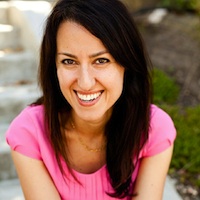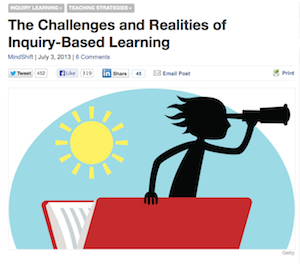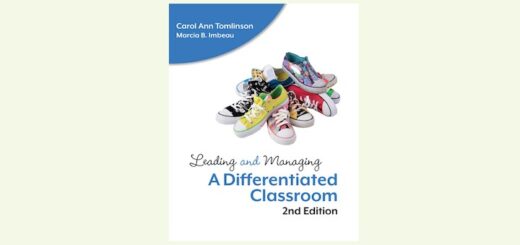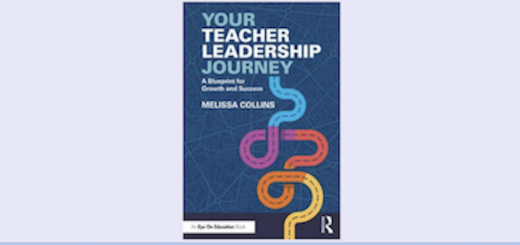MindShift’s Tina Barseghian
 A MiddleWeb Interview
A MiddleWeb Interview
Tina Barseghian is the founder and editor of MindShift, an influential education blog supported by public broadcasting station KQED in San Francisco. Before launching MindShift (with the forward-thinking slogan “How we will learn”) in 2010, Barseghian served as executive editor for Edutopia (George Lucas Educational Foundation), blogged for the San Francisco Chronicle, and worked as an editor and freelance journalist for a variety of publications. (Learn more at LinkedIn.)
We’re truly impressed by the consistent quality of Mindshift’s articles, penned by Barseghian and a pool of freelancers (e.g., Annie Murphy Paul and Katrina Schwartz) and school-based educators. We thought one of the best ways to introduce MiddleWeb readers unfamiliar with the site would be to ask Tina to answer a few questions.

I knew from the time I was 10 years old that I wanted to be a journalist, so in that sense, I think I was lucky because there was never a doubt — I had a singular path. That said, my mother was a public school teacher for 35 years, so that career path was also very appealing to me, because I saw first-hand how much she affected her students and how gratified she was by her job.
I did work as a preschool teacher as one of my jobs during college and found it exhausting and awesome. It’s a lot of work that takes a lot of emotional and physical energy, but I loved those kids so much and was personally invested in how their day went, every single day.
But in the end, I was always drawn to asking lots of questions and writing, and the perfect intersection of that was journalism. And now, as the editor of MindShift, I feel like I’ve struck gold because I cover what I’m personally interested in, and still get to ask lots of questions and edit and write.
2. How did MindShift begin? What were the original goals for the blog and how has that morphed over time? What can you tell us about your audience and your relationship with National Public Radio?
When I launched MindShift in September of 2010, as part of NPR’s Argo project, I had a good sense of the education landscape and an idea of what direction I wanted to take it because of my work at Edutopia, where I was the executive editor of the magazine.
I’ve always been interested in progressive education, and how innovative ideas from the margins can infiltrate and become part of the norm, and this is the perspective I try to bring to MindShift.
Though the evolution of ed-tech was originally going to be the main gist of coverage, I’ve since added somewhat broader topics that relate to progressive education in general, such as inquiry learning, project-based learning, nurturing creativity, alternative assessments, etc.
My audience has grown pretty steadily, and I’m up to more than half a million pageviews a month now. As for affiliation with NPR, MindShift articles regularly appear on the NPR website during weekends. The MindShift site is a service of KQED, an NPR member station in San Francisco.
3. How would you characterize the kinds of content MindShift likes to share? Has your tagline “How we will learn” proved to be a good filter?
Yes, in fact the phrase “How we will learn” can fairly be applied to almost every article I post on MindShift. I’d say there’s a combination of different kinds of content on the site. I publish straightforward, reported articles written by journalists about nationwide trends, as well as how-to’s (teaching strategies), service-oriented posts and app reviews. We frequently feature articles about neuroscience and the science of learning as well.
4. MiddleWeb is “all about the middle grades,” which we loosely define as grades 4-8. What are some of your favorite MindShift posts about those grades?
I’d say that almost all the articles on MindShift can be applied to those middle grades, and to teachers of those middle grades. As kids start to become more savvy about digital tools, the learning process can start to leverage those tools for more than just consumption, but also creation. And that’s where educators have the most influence — in shaping how kids think about becoming creators of relevant artifacts — digital or analog — that can be used in the world outside the perimeter of school.
Editor’s note: Here are several of our favorite recent MindShift posts with a strong middle grades connection:
• Allergic or Not? Middle School Students Design App That Tells You
• Student Mentors: How 6th and 12th Graders Learn From Each Other
• Can Student-Driven Learning Happen Under Common Core?
5. So, how will we learn? You spend a lot of time examining education’s cutting edges. What would you say are the 4-5 biggest shifts likely to take place in the K-16 education systems between now and 2025, when today’s kindergarteners will finish high school…. assuming we still do school that way.
It’s so hard to say! As a journalist, I’m much more an observer than an active predictor. But I guess if I had to list the things I’d watch closely, it would be how the Common Core is rolled out, accepted or rejected by states, and how that will affect what happens in classrooms — whether it will give individual teachers the independence to really take their students to that level of deeper learning and critical analysis and relevant work and thought — or whether it will continue to tie their hands to teach to a set of standards that may not prove to be all that different than existing ones. I think only time will tell.

Another interesting question, of course, is how the data from all these digital tools are going to be used, who will “own” the data, and what will be done with it.
I’m also wondering whether project-based learning and inquiry learning will become more commonly practiced in schools and classrooms across the country. It’s so much more work because there’s no prescribed set of rules to carry out these learning approaches — and that’s actually the whole point. But from what I’ve seen, these strategies seem to be the best way to get kids invested in what they’re learning.
Thanks to Tina for taking the time to answer our questions and give us some things to think about.
One of the many intriguing threads running through the MindShift timeline is a focus on the Maker Movement and its as-yet largely unrealized potential to influence the teaching of STEM subjects and to help shape teaching practice more generally. Here’s the page at MindShift where Maker posts are collected.
































